Design Features
Fresco is a technique of painting on wet or dry plaster using paints and brushes. In the Middle Ages and the Renaissance, the method of painting only on wet plaster was used, which after drying formed a film, which made the fresco durable. Today, a fresco in the interior is any wall painting with paints, brushes and an airbrush, which makes installation easier.
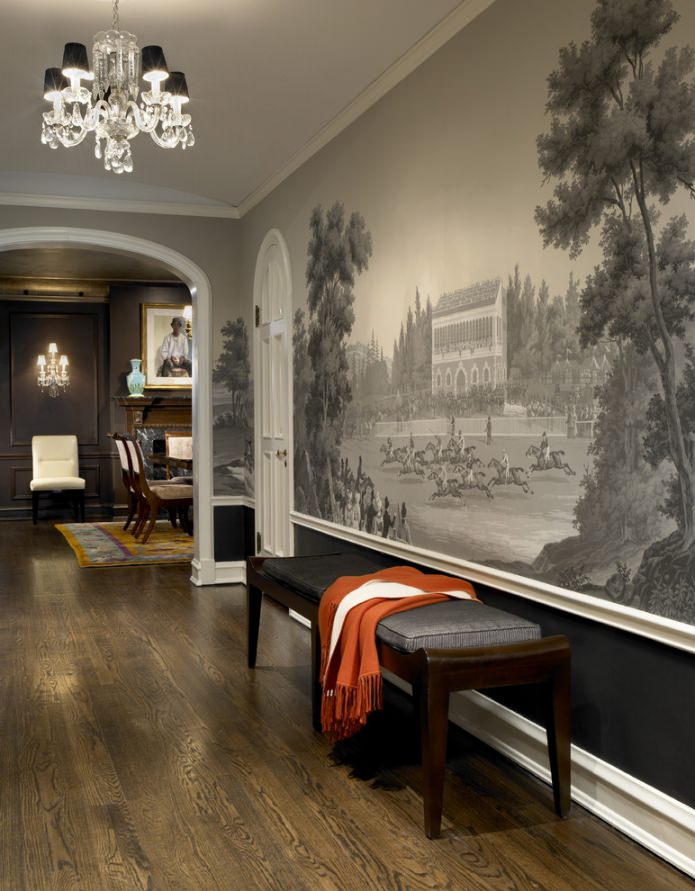
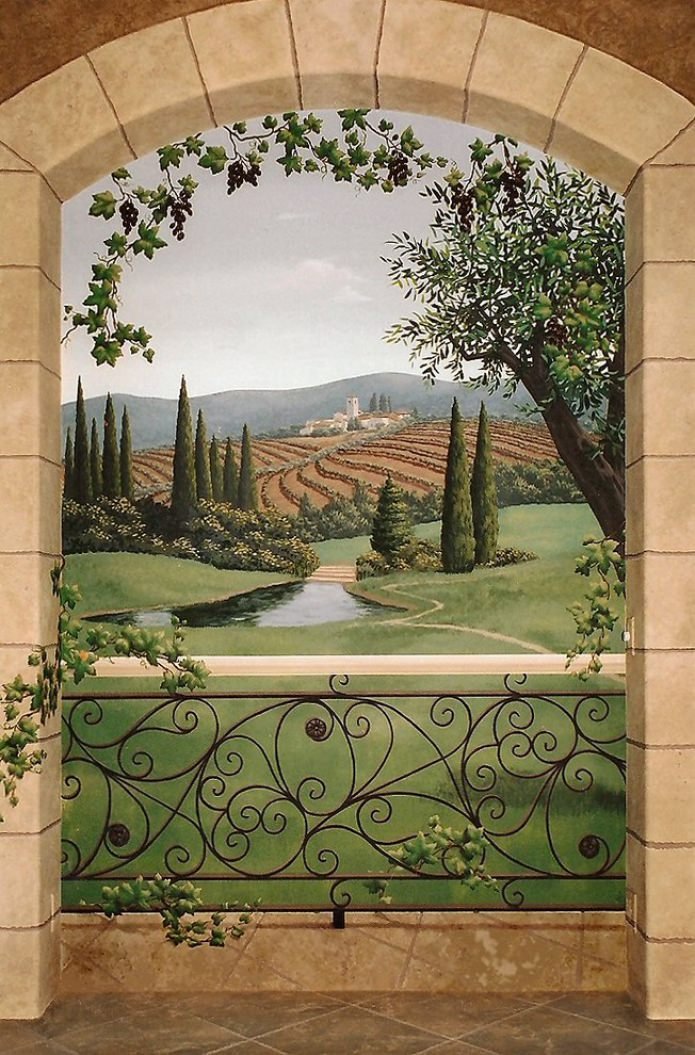
In a modern interior, you can find a fresco in different techniques and with different patterns, which can be applied not only to plaster, but also to another base. This design option is suitable for a classic interior, where all the canons of decoration and furniture are observed, as well as for a modern design.
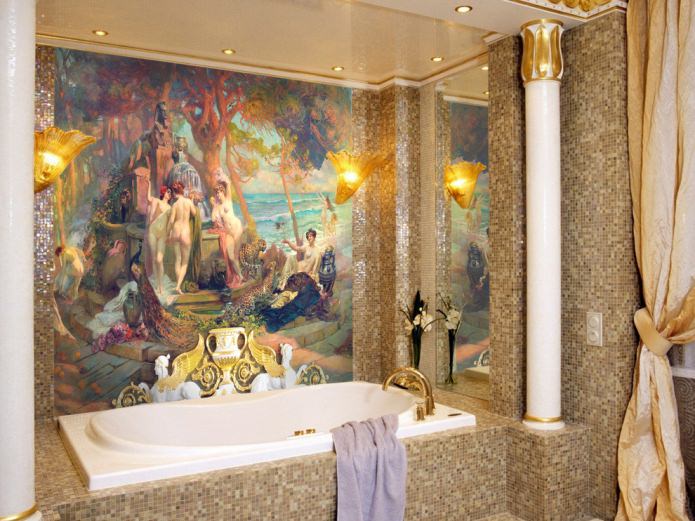
Types of frescoes
Today, it is not necessary to invite an artist to paint the walls, it is enough to order a modern fresco, which contains only natural components, such as sand mixture, lime, paints, glue mixture. The drawing can be made from a photo or sketch. There is a large selection of frescoes for the interior, such as: on plaster, on non-woven fabric, on canvas, on self-adhesive and on a rigid base.
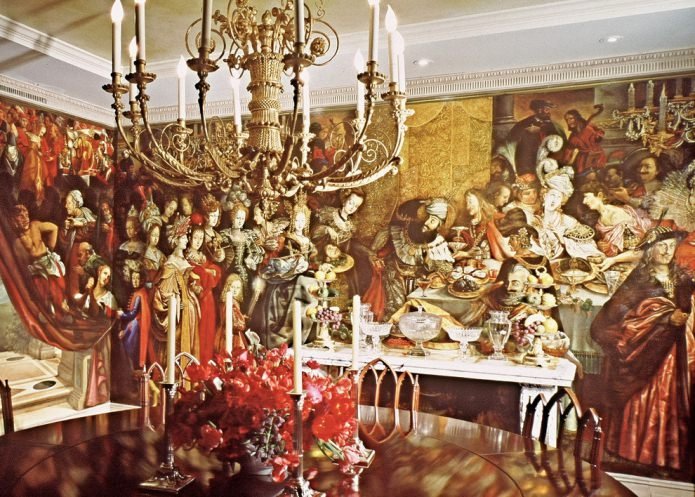
The photo shows an interior with a themed fresco from the everyday life of the Middle Ages, which occupies two walls of a spacious dining room in a classic style.
Based on plaster
A wall fresco based on plaster is suitable for a classic interior. The technique is close to creating antique frescoes. It is made of plaster based on a mounting grid. The pattern is applied with paints. It is attached to the wall or ceiling with glue, the edges are decorated with plaster, so the picture looks like it is poured into the wall.
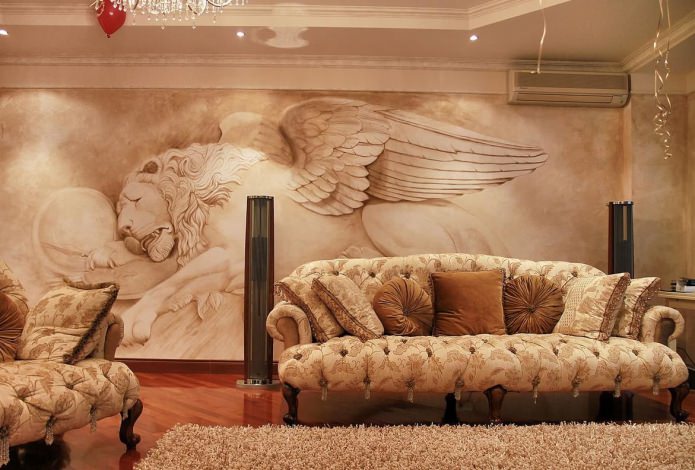
Painting on non-woven
Painting on non-woven is done using a photo wallpaper printer. After applying the picture or photo, the image is aged. It can be applied to slightly uneven walls using the non-woven photo wallpaper technology. Such a fresco can be done on the entire wall with a landscape of distant Venice or Paris.
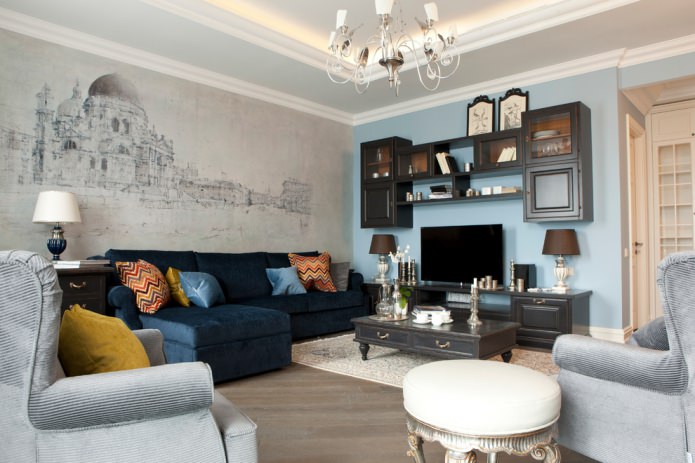
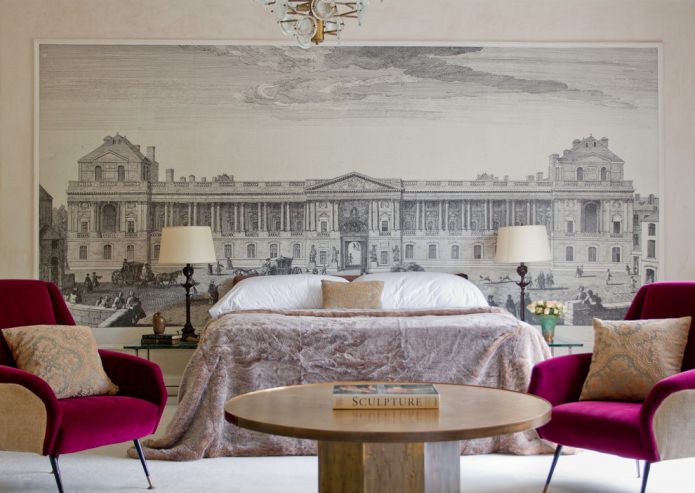
Fresco on canvas
This type is very popular. Plaster is applied to the canvas, then a drawing. After that, the method of artificial aging and wax coating is used. It can be done according to an exclusive photo, or be standard, be in a frame or without. A fresco without a frame can be glued to the wall using wallpaper glue. Dust should be removed only in a dry way.
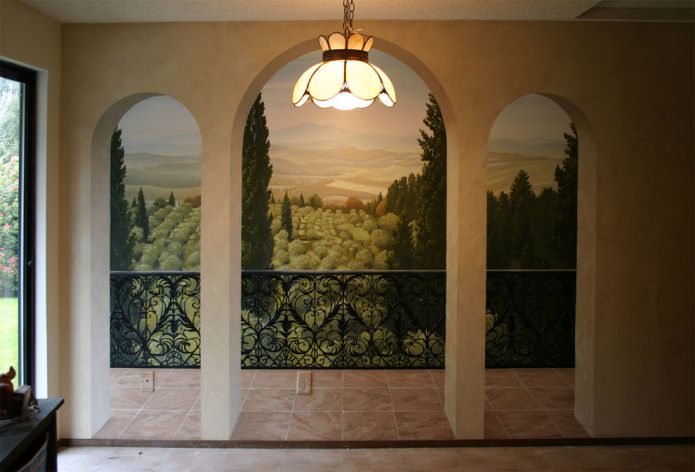
The photo shows a fresco that, in combination with arches, creates an imitation of an open balcony. For such an interior, the walls should be neutral in color.
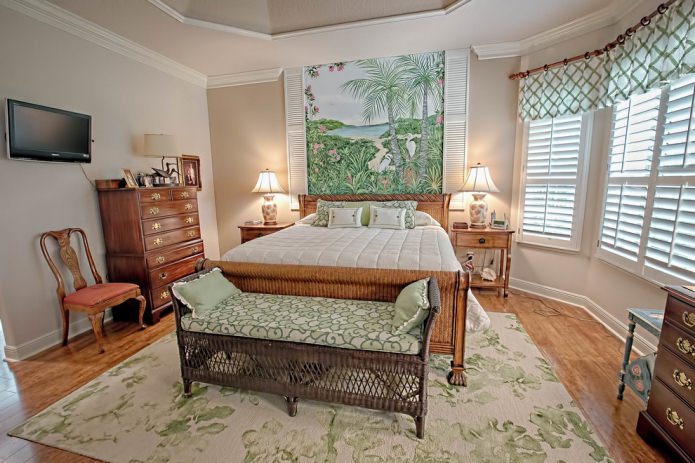
On a self-adhesive base
A fresco on a self-adhesive base is made using digital technology. Sand is applied to the front side of a finished photo of the required size, and self-adhesive film is applied to the other side. Such a fresco can be glued to a rubbed and degreased surface of a ceiling or wall. It looks like photo wallpaper and because of its thin thickness it does not hide the defect of the walls.
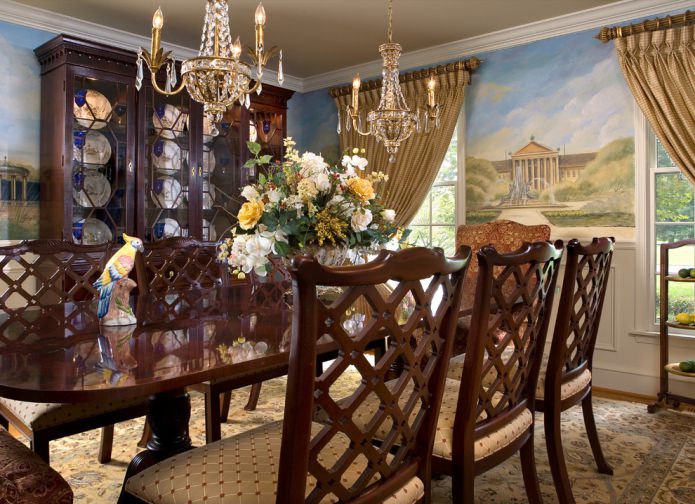
On a rigid base
On a rigid base they make a painting, which is limited in size (the maximum parameter is 3×1.5 meters). It is printed on a hard prepared board, in the interior it can be framed, or simply glued to the wall.
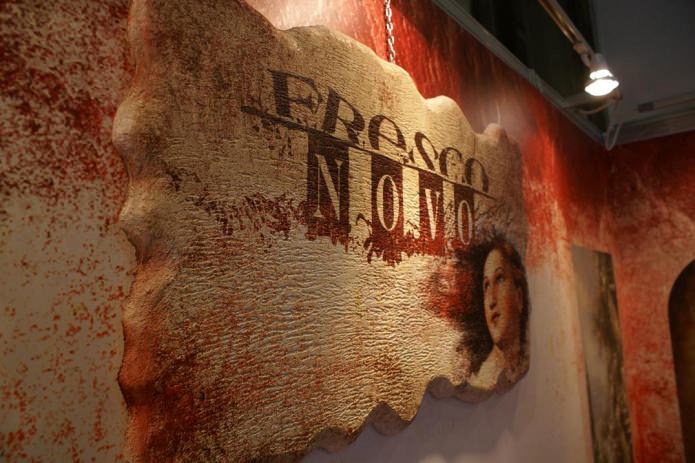
Application of the finished fresco and its location
The elastic fresco, which looks like photo wallpaper, is attached with glue and looks organic with the wall, the option on a hard base will have protrusions like a painting.
The algorithm for applying the canvas:
- Carry out preparatory work to level the wall surface, it should be smooth, take measurements of the fresco and the surface.
- Apply glue for non-woven photos wallpaper on the wall and the back of the painting, which will then become soft, so it is important not to break it.
- Glue and remove bubbles from under the canvas. The irregularities will go away after drying.
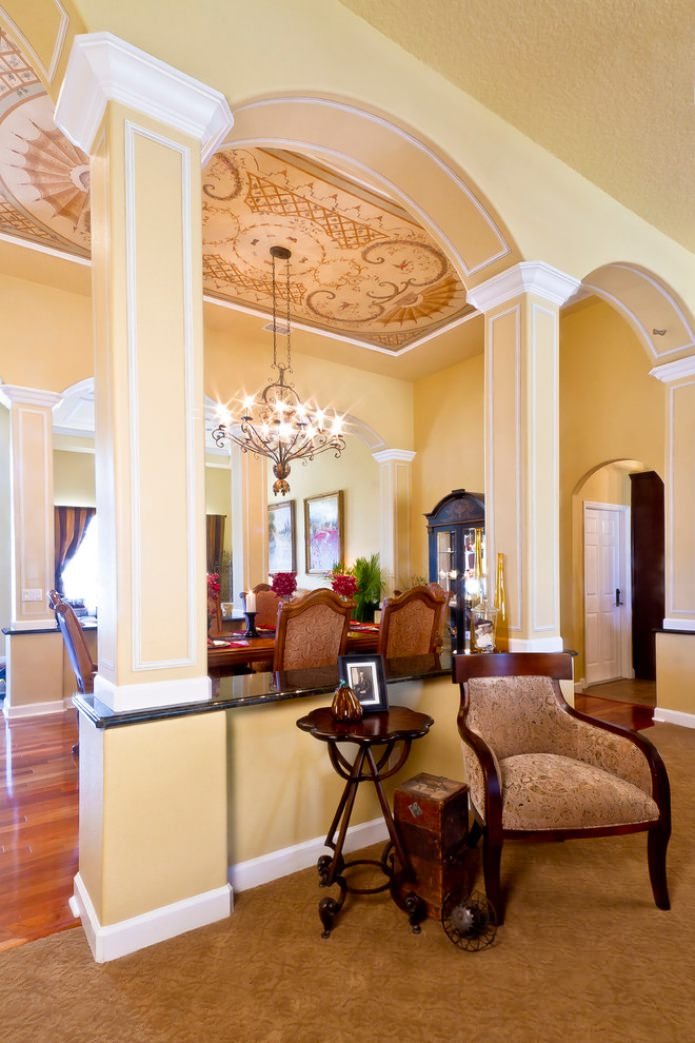
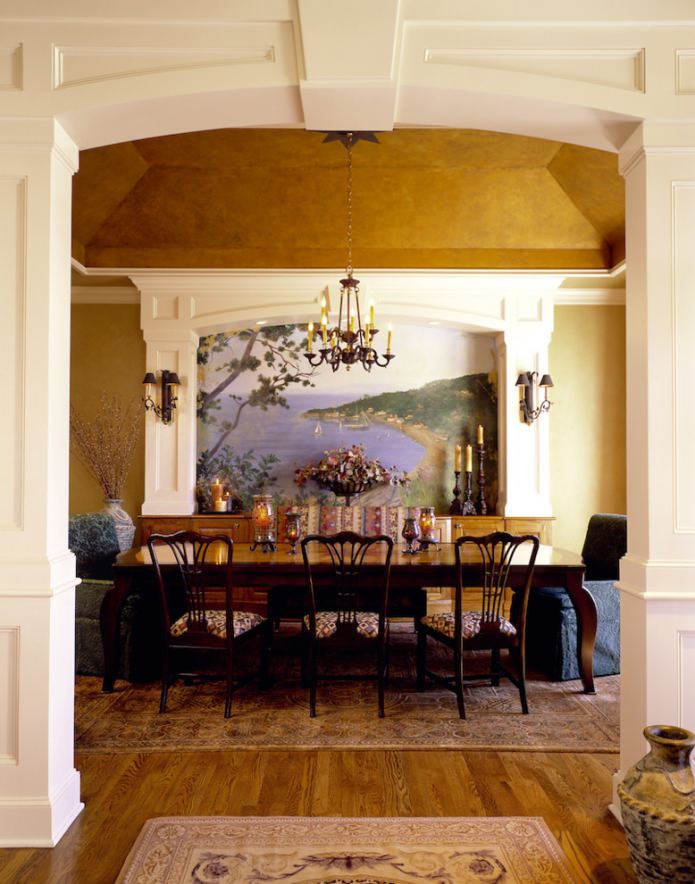
Location on the wall
Like photo wallpaper, frescoes in the interior are most often used to decorate the wall. Its size can be of any format and shape, from square to ellipse. In a large room, it can occupy the entire wall.
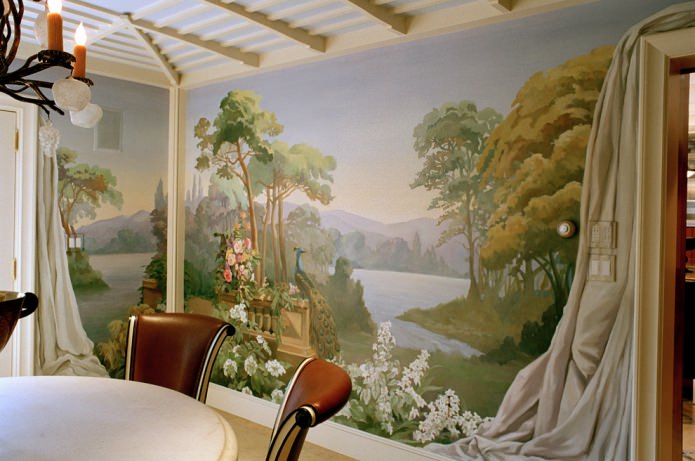
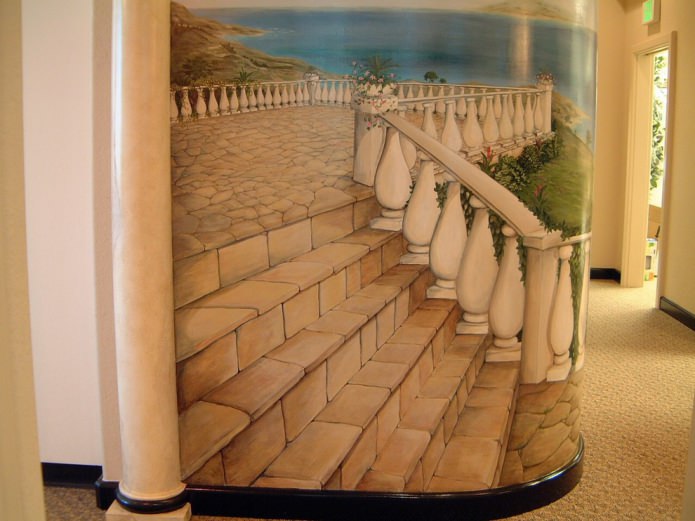
Location on the ceiling
In order to decorate the ceiling, you can use painting together with plaster or polyurethane moldings. The ceiling should be high so that it does not “press” the walls with its pattern.
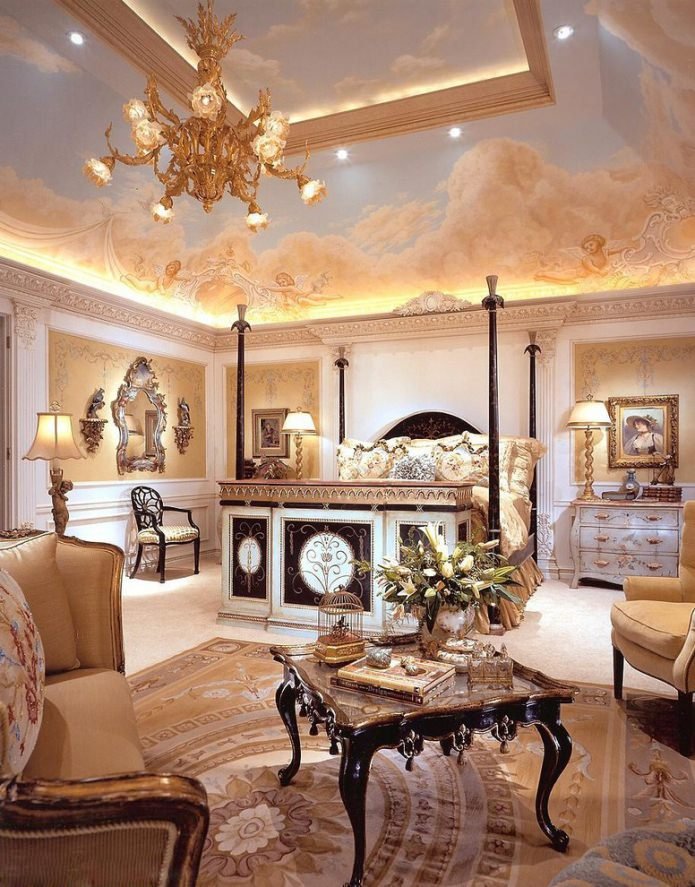
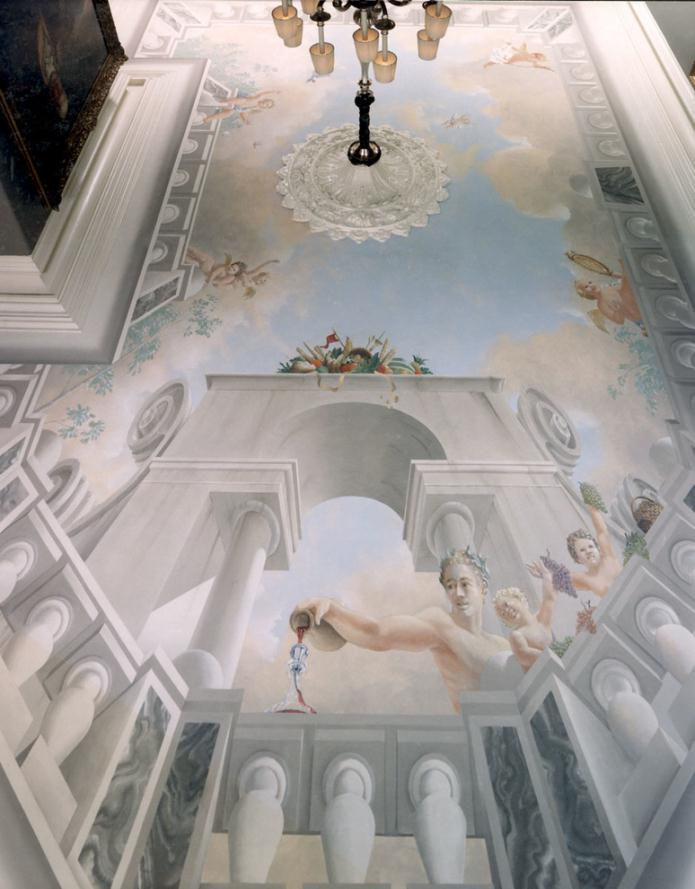
As a decoration
As a decoration, you can decorate ledges, niches, columns. You can decorate frescoes in the interior with frames and moldings.
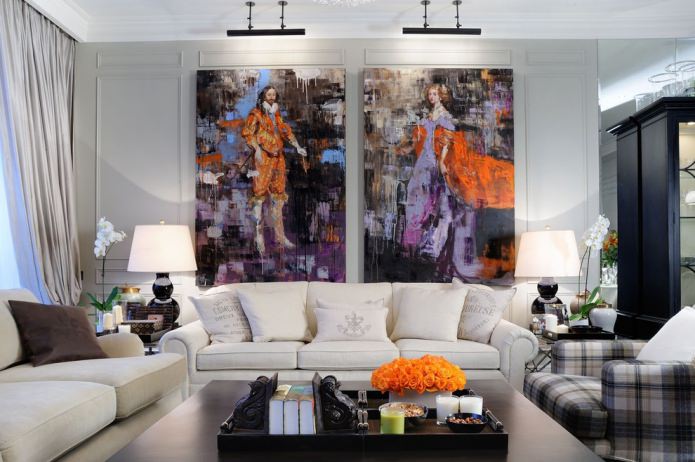
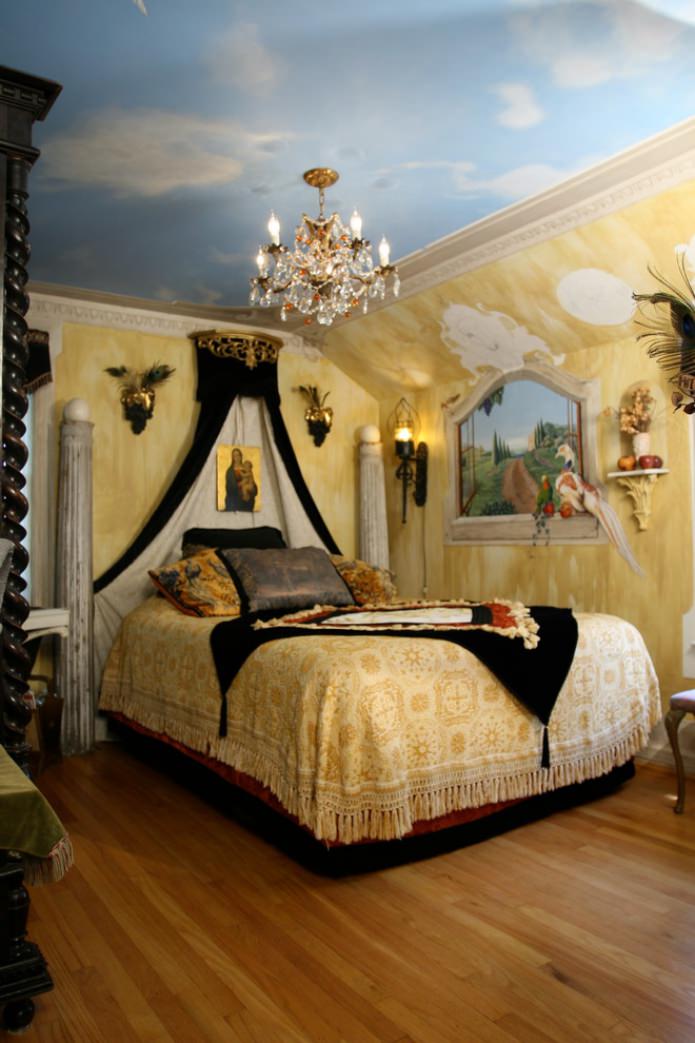
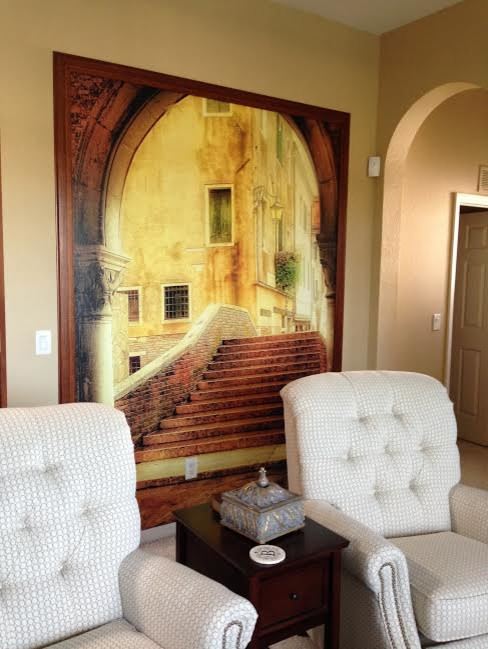

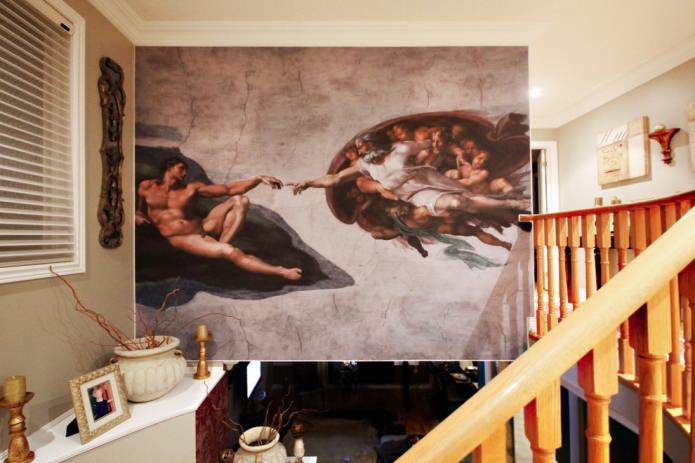
The photo shows a fresco with a reproduction of Michelangelo’s painting “The Creation of Adam”, which decorates the niche above the stairs. This option is suitable for a classic interior.
Features of use in styles
When choosing the size of the fresco and its theme, you need to start from the size of the room, the arrangement of furniture and the style solution.
Modern
A fresco with abstraction, geometry, simple stains with color transitions is suitable for a modern interior. Plot images are also suitable, especially for a child’s room.
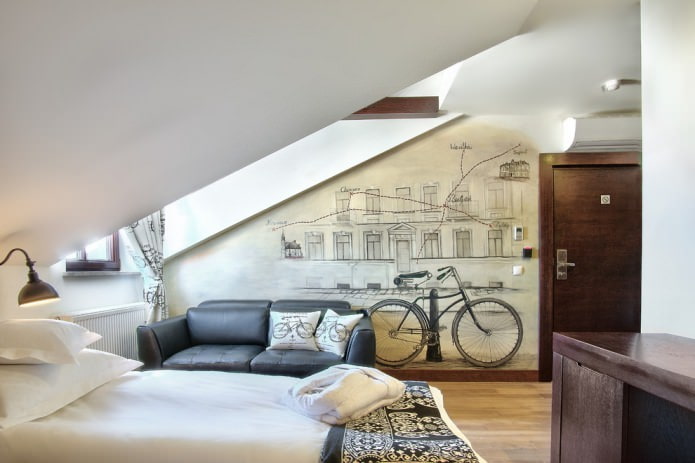
Classic
Reproductions of world masterpieces of painting, images of flowers, still lifes are suitable for the classics. The color scheme remains neutral. Of all the types of painting, canvas, plaster, and hard base are suitable. In a classic interior, white or gold frames play an important role, so you can use them.
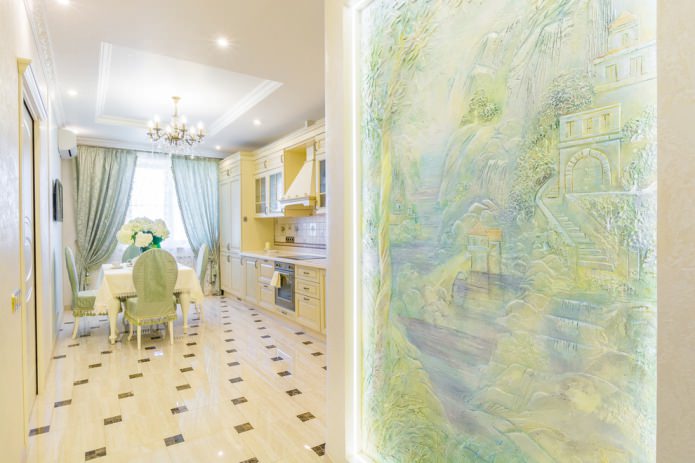
In the photo, a fresco on plaster in pastel shades with an image of the natural ensemble of the castle looks unobtrusive and gentle in a light classic interior.
Provence
The Provence style can be emphasized with a colored fresco with pastel flowers or a lavender field. A large image requires a separate wall that will not be cluttered with furniture. The fresco will become the accent of the entire room, so it is important not to overload the interior with additional decorative elements.
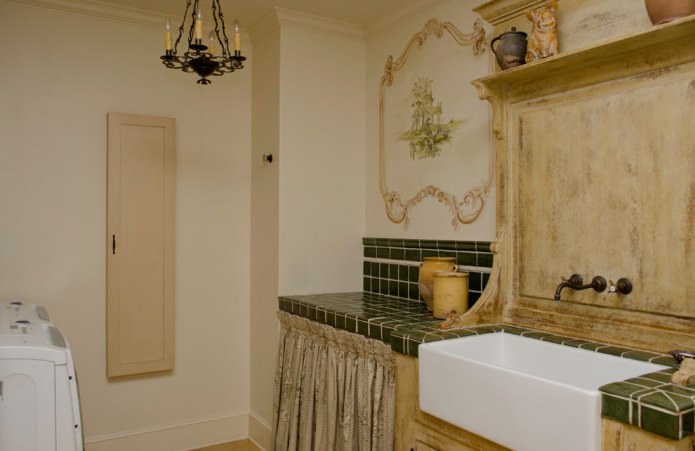
Combination with other materials
The finishing materials that look good with painting are plaster, matte paint, wallpaper, stone. Venetian plaster together with the image looks harmonious and natural in the interior. Decorative plaster (liquid wallpaper) will also work. When gluing onto non-woven wallpaper, you need to use high-quality glue. It is better if the wallpaper is without ornaments and large patterns.
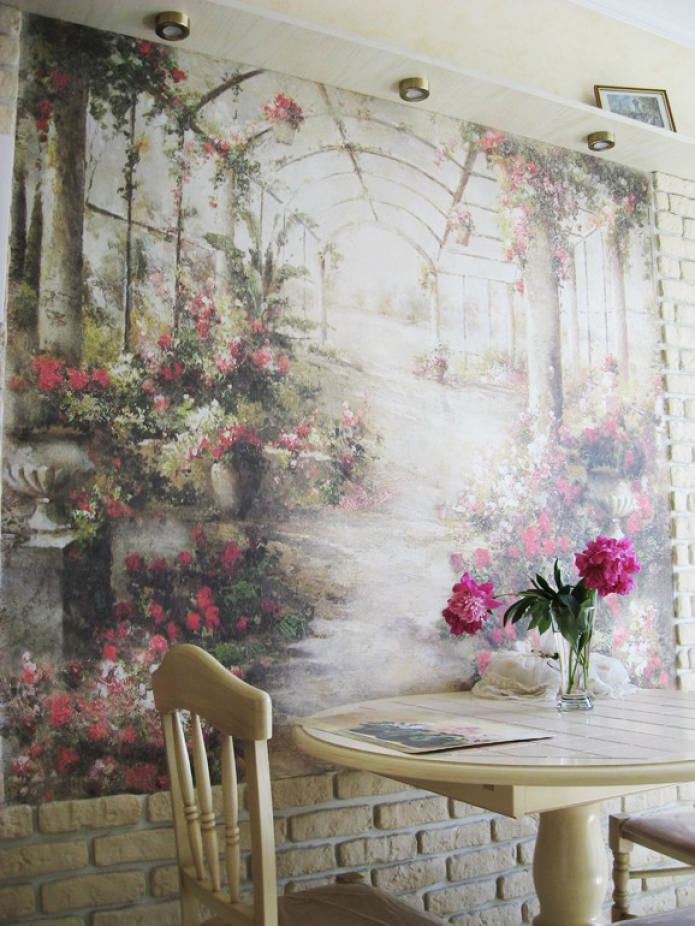
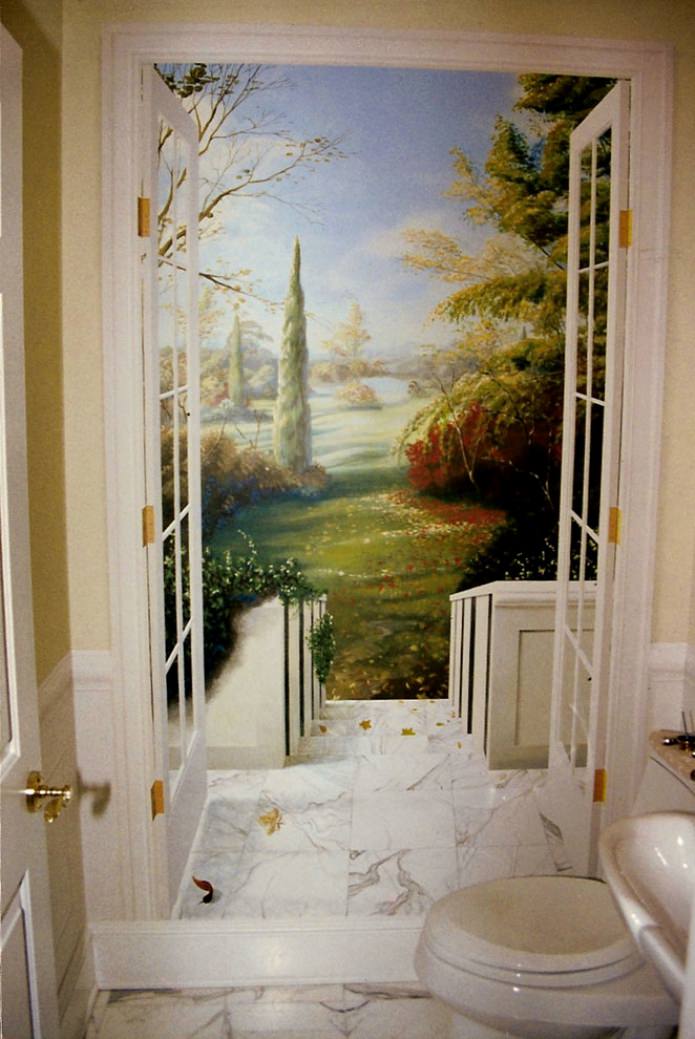
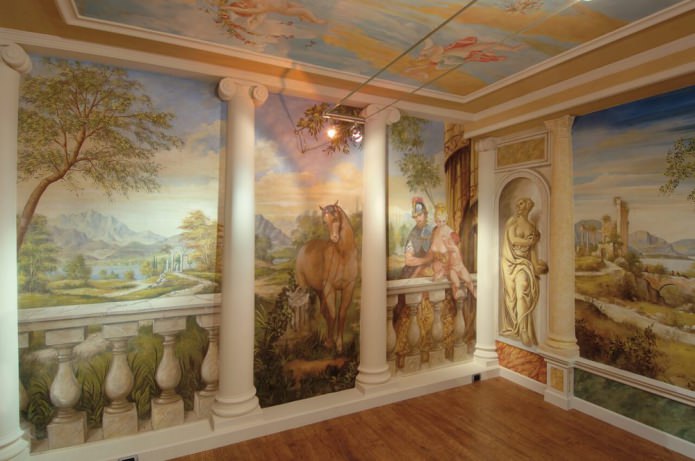
Choosing a design and images
A drawing can divide a room into zones or create an accent. The theme of the image should be chosen based on the style of the room. For a classic interior, you can use famous paintings, stylized portraits from photos, historical panoramas, flowers, the face of a saint. You can also make an iconostasis from frescoes. A drawing of the sky with clouds, flying birds or angels is suitable for the ceiling.
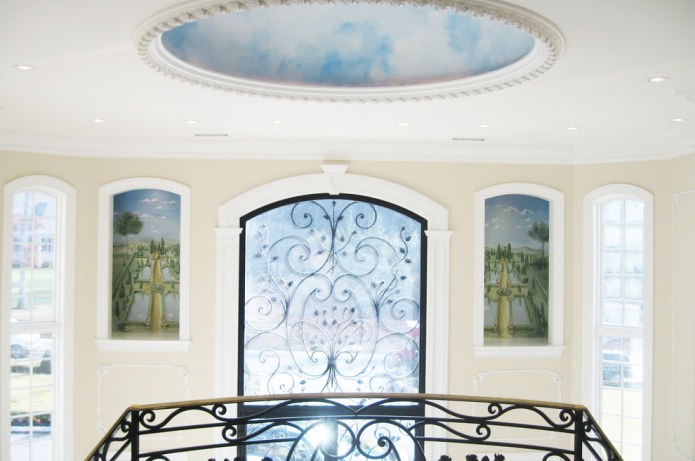
In the photo, the image of the sky and the stucco edging on the ceiling create an imitation of a window, making the interior airy. This design is suitable for low or dark rooms.
Abstract paintings, where the emphasis is on form and color, are suitable for a modern interior. Images imitating a view from a window or balcony onto a city panorama or beach are also popular. The drawing of branches and flowers can be in both pastel and bright shades.
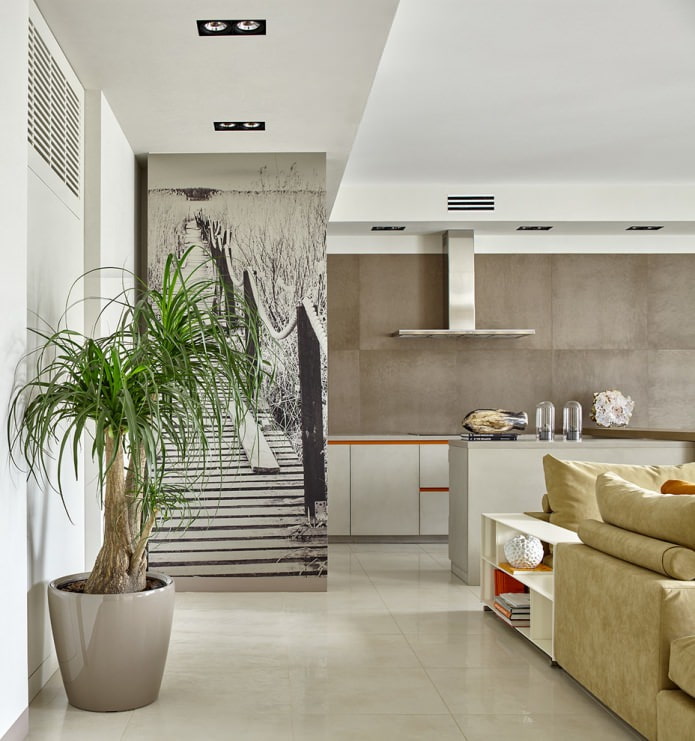
Apartment room decor
Kitchen
A still life, imitation of a view from a window, fruits, and flower arrangements are suitable for the interior of the kitchen and dining room. To create an accent on the dining area, you can use a view of the forest, mountains, or a waterfall.
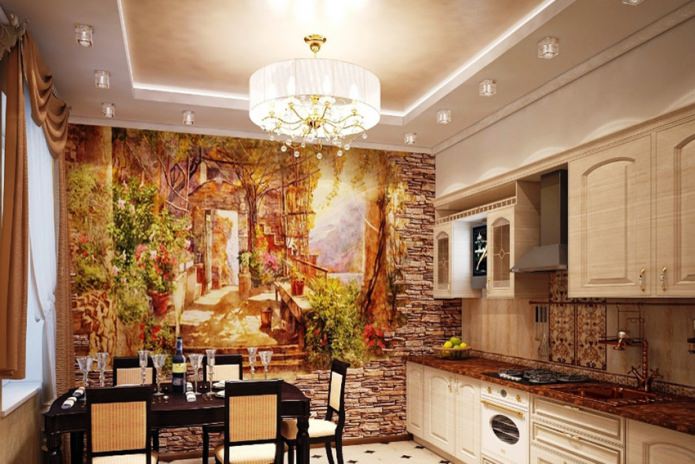
In the photo, the fresco on the stone accent wall in the kitchen looks organic due to the successful selection of the pattern and good artificial lighting.
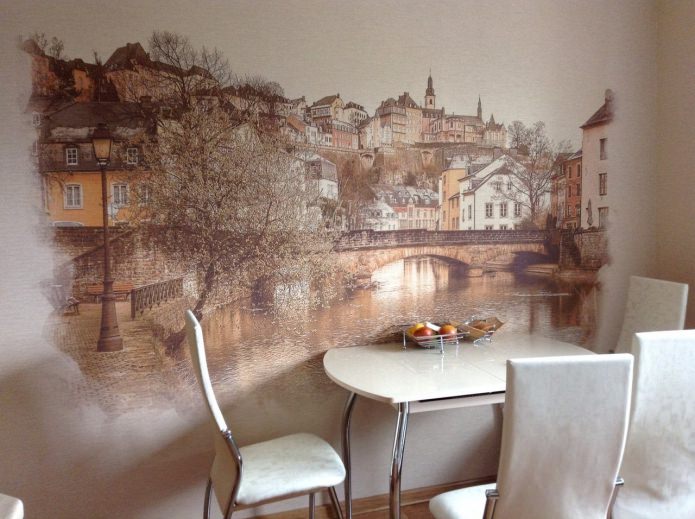
Living Room
In the interior of the living room, you can use a painting with a plot, a photo of the old city, your portrait. In a classic living room, frames will be appropriate, and in a country style, a stone edging will be appropriate. The color scheme should match the overall concept of the room.
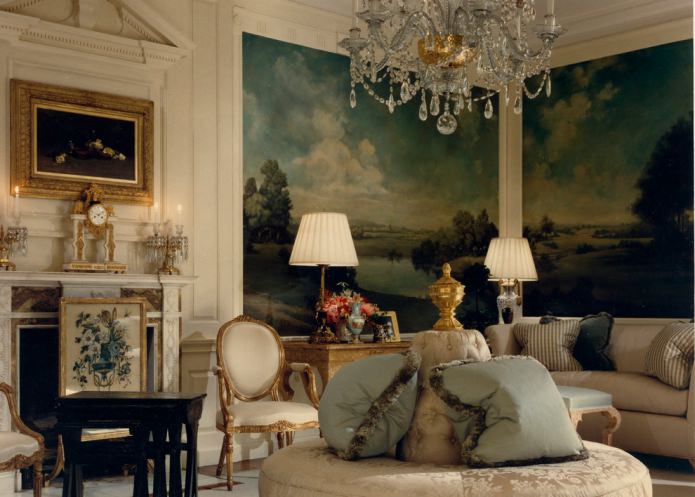
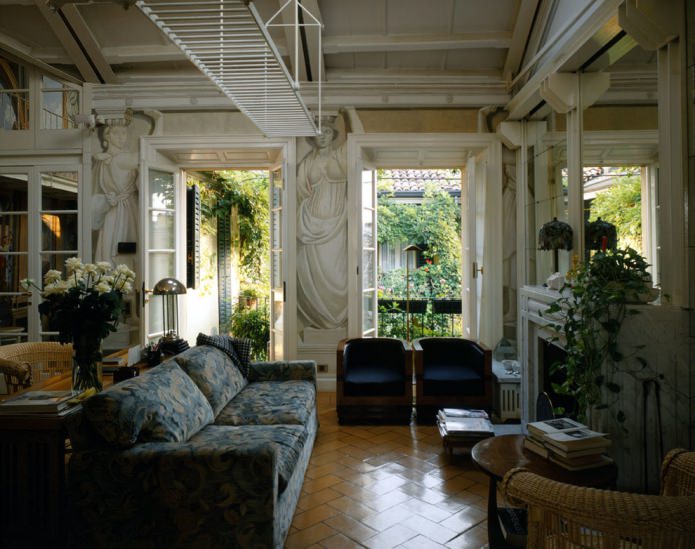
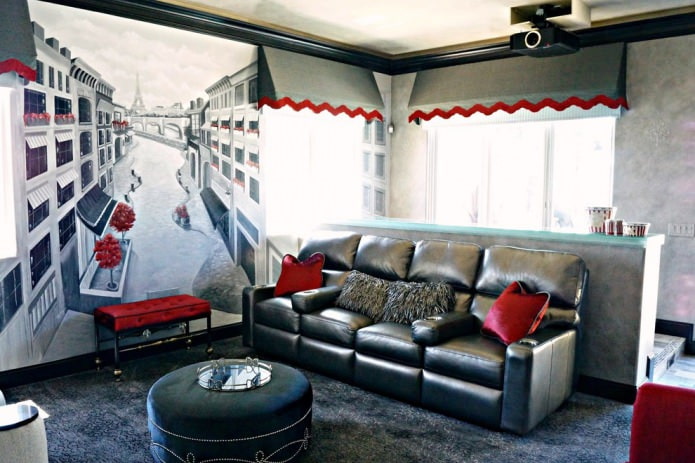
Bedroom
A painting of clouds on the ceiling, angels, flowers in pastel shades, seascapes that will help you relax are suitable for the bedroom interior. It is inappropriate to depict people or scenes here because of their bulkiness.
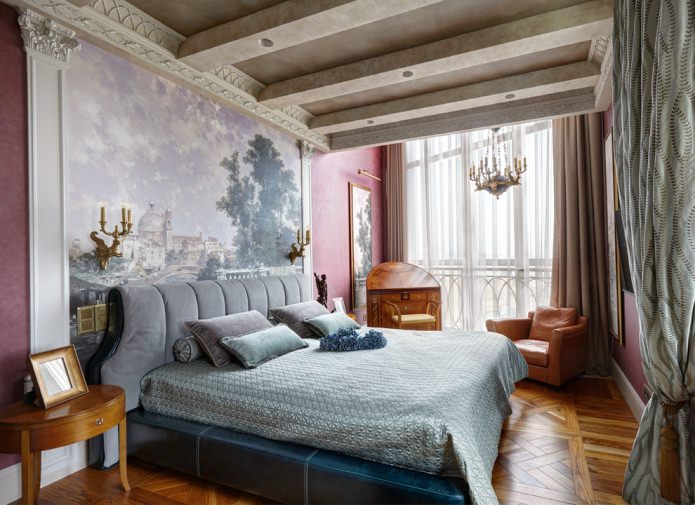
In the photo, the wall at the head of the bed in the bedroom in a classic style is decorated with painting on non-woven fabric and white false columns made of polyurethane. The contrast with the color of the walls is harmoniously combined in the interior.
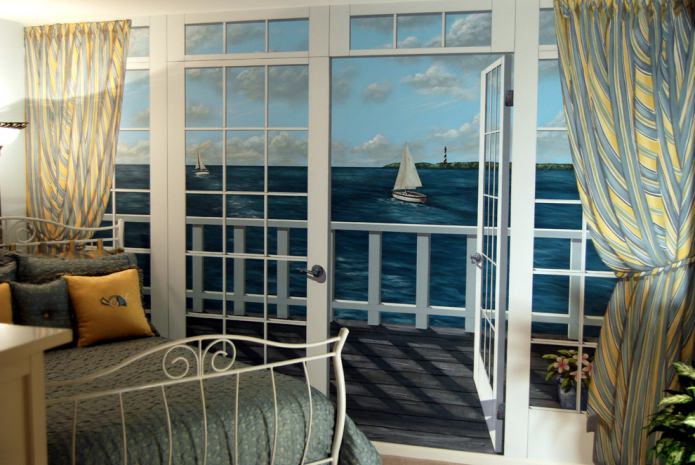
Hallway
For a narrow hallway, you need to use a light fresco along the wall. For decorating a corridor without a window, an image of an open window with a view of nature is suitable.

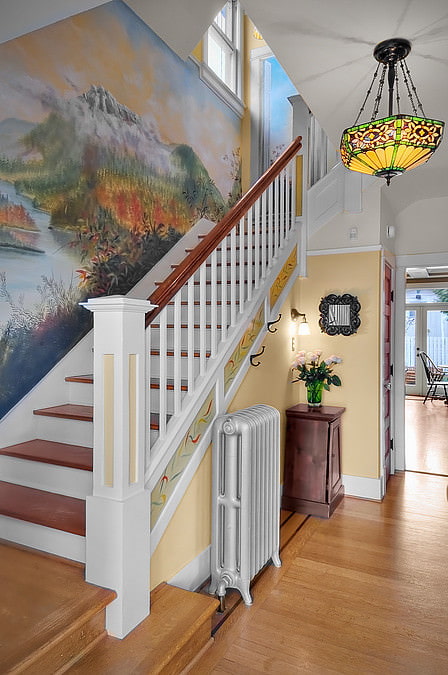

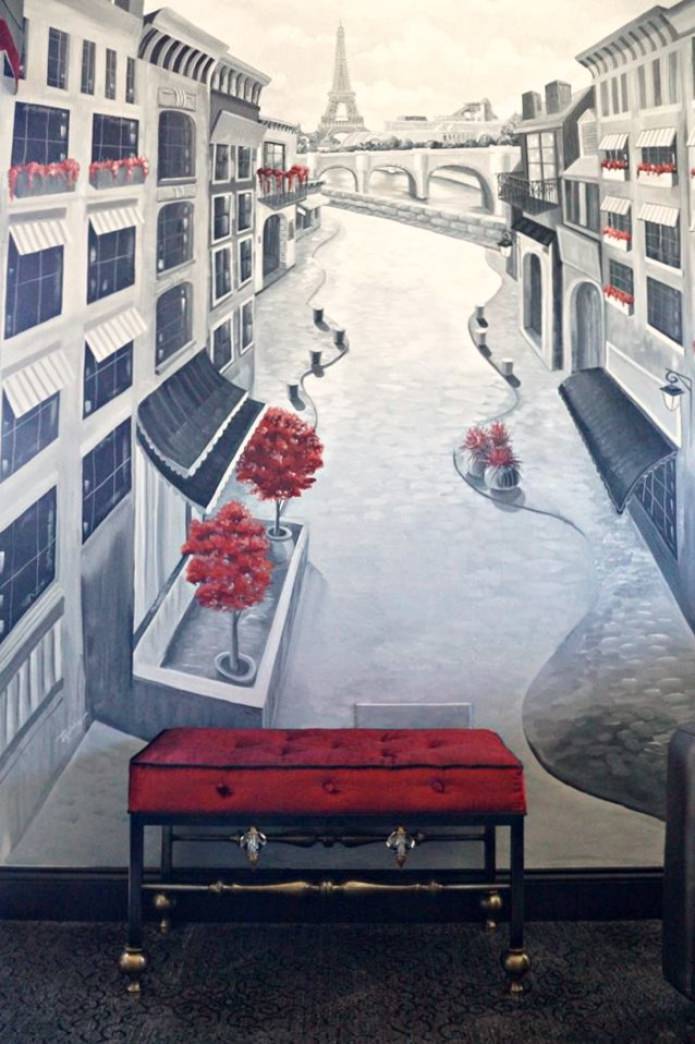
Children’s
In the interior of a children’s room, the painting should be understandable to the child. It can be a fairy tale plot, a cartoon character. It is best if the fresco is opposite the bed so that the baby can look at it before going to bed.
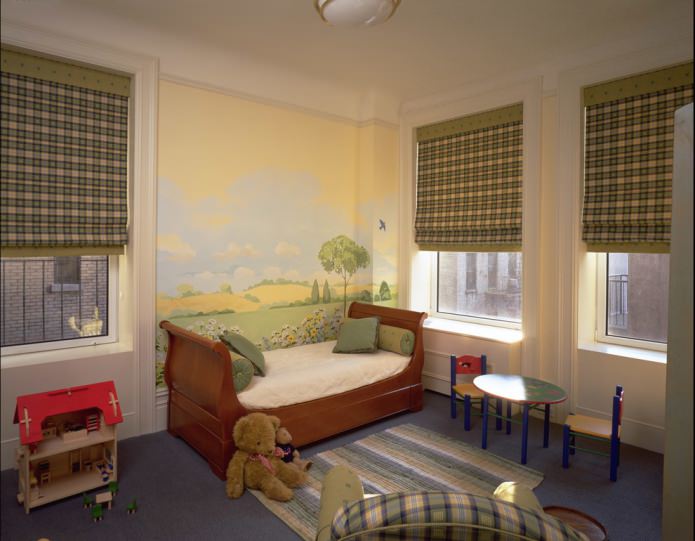
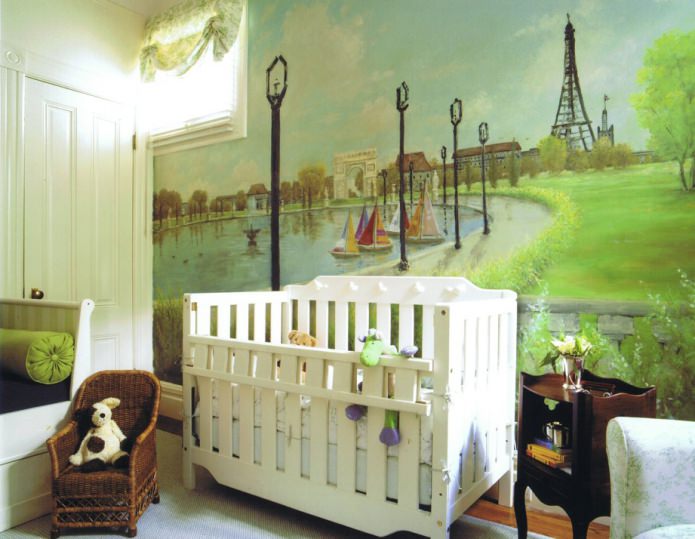
Now reading:
- How to paint a brick wall? 7 stylish solutions for a cozy interior.
- Organza for curtains: 80+ interior photos and the best ideas for window decoration
- Ultimate Guide to Buying a Used Opel Zafira Tourer
- Olive kitchen: 49 photos, color combinations and design ideas.
- Nissan Leaf: The Electric Revolution in Driving